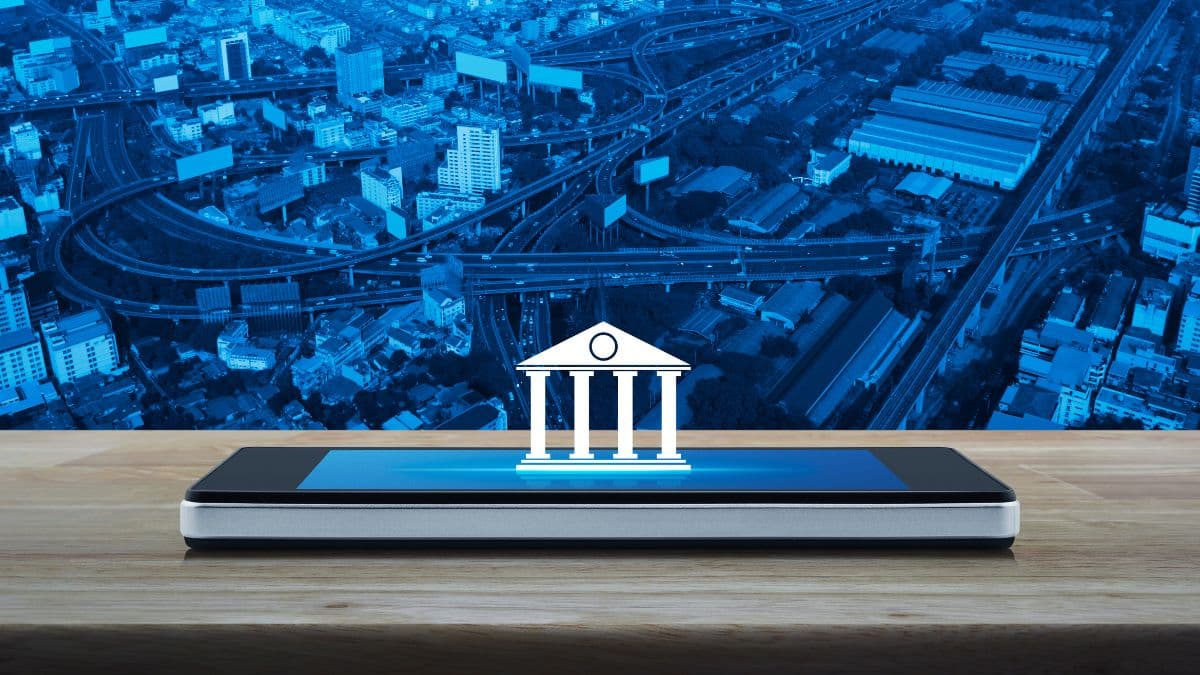HIGHLIGHTS
- Introduction to digital banking in India
- In this article, we explore various types of digital banking in India
- Advantages and Disadvantages of Digital Banking

In today’s times, digital banking is a smart system of banking for transactions because it makes transactions easy and less time-consuming. Digital banking gives you free access to continue transactions online at any time where without going to a bank branch which is time-consuming.
Digital Banking gives you the 24hr access to transactions. It can be done through any device like mobile, laptop, etc. With the help of digital banking, all information about all the transactions will be available on your device at the time of transferring and receiving the funds. It’s all about smart India and in this article, we explore how transactions become easy through digital banking or various types of digital banking.
Digital Banking in India
Digital Banking is the automation of traditional banking services. This enables a bank’s customers to access banking products and services via an electronic/online platform. Digital banking means digitizing all of the banking operations and substituting the bank’s physical presence with an everlasting online presence, eliminating a consumer’s need to visit a branch.
Financial institutions offering their services online with digital banking do away with tedious paperwork like cheques, demand drafts, and pay slips. Digitally working banks allow users to access all banking services 24*7 without the need to personally visit the bank branch, all you need is a mobile phone or a laptop-like devices.
Different types of digital banking in India
Internet Banking:
- Operated through respective browsers on the PCs and smartphones.
- They involve transfer of funds, payment of bills, and any other account-related activities.
Mobile Banking:
- Banking through mobile applications.
- Features: such as balance inquiry, transferring of funds, payment of bills and other charges.
- Examples: In the HDFC MobileBanking App; In SBI YONO.
USSD Banking:
- Uses Unstructured Supplementary Service Data for their endeavours.
- Available for use on simple handsets without Internet.
- Services: balance inquiry, mini statement and fund transfer.
- Example: *99# service.
UPI (Unified Payments Interface):
- Mobile applications for immediate exchange of deals between banks.
- Allows the users to operate many bank accounts under one application.
- Examples: Most popular apps are Google Pay, PhonePe, BHIM.
Mobile Wallets:
- Digital mode means of payment through which customers of sellers can make payment in advance and have it stored digitally.
- Being used to buy consumer goods, pay bills and transfer of money through agencies such as banks.
- Examples: Some of the mobile wallets are Paytm, Phonepay, and Amazon Pay.
Also Read: How to use Google Pay Wallet
IMPS (Immediate Payment Service):
- Cross counts for inter-bank payment through electronic books in real-time.
- Available 24/7.
- Through Mobile Banking Apps, Internet Banking, and ATM.
NEFT (National Electronic Funds Transfer): NEFT (National Electronic Funds Transfer):
- Electronic funds transfer system.
- Settlements in half-hourly batches.
- Available during banking hours.
RTGS (Real-Time Gross Settlement):
- Real-time gross settlement throughout the operating cycle of the processing institution.
- Used for high-value transactions.
- Available during banking hours.
POS (Point of Sale) Terminals:POS (Point of Sale) Terminals:
- Terminals deployed for accepting of cards.
- Electronic cards used at the points of sale.
- Has features of fixed POS terminals and Mobile POS (mPOS).
Digital Lending Platforms:
- Online environments for loans’ submission and granting.
- Examples: Lendingkart, Capital Float.
Chatbots and AI-based Services:
- Telephonic and online customer support and business services through robots.
- Examples: HDFC’S- Eva and SBI’S – SIA.
Wearable Banking:
- Opening a new channel of banking services through use of smartwatches and other wearable gadgets.
- Example: The competing systems include Apple Pay, and Samsung Pay.
Advantages Of Digital Banking In India
- Tapping convenience: The main advantage of utilizing digital banking services, is that it is mobile and easy to access from any place at any time.
- Instant delivery: Besides, anytime banking makes banking easier, a strong internet connection helps to make the banking fast.
- Security ensured: Banks have elaborated codes that can hardly be violated. This makes them a very reliable source of information eliminating of any sort of manipulation.
- Multiple payment options: The benefits of digital banking continue in a valuable direction with the opportunity of a choice of payment. There are mobile applications in which the banking can be downloaded on the mobile device or use debit cards to make the payment. Some of the instant payment apps are integrated into your bank’s mobile application; otherwise, you can get some from the Play Store.
Disadvantages Of Digital Banking In India
- There is no facility for the cashless deposit: As for the other elements of the business model, there is no provision for cash deposits. Withdrawal can be done at the bank’s branch or any cash with draw point while depositing money requires a customer to proceed to the bank branch or a cash deposit point.
- Must-have Internet access: In the case where a constant connection to the internet is not available, then you will experience limited remote banking services. It can also be affected when the bank servers collecting this information are not available.
- Internet Scams: Consequently, if you fail to observe some of the measures taken by various banks on security, for instance, not using password, sharing passwords with other persons, or not logging out your Internet banking account, it may be possible for you to be defrauded on the cyberspace.
Conclusion
In the era of digital banking like UPI payments, transactions become easy and fast from anytime anywhere. But some of the time the beginner’s user of this smart banking will be scammed by cybercrimes. It is important to have a knowledge of online transactions and digital banking also has a great future in India, but strict laws also be given Indian government for online transactions to decrease fraud during digital banking.
FAQs
Is digital banking safe?
Yes, it is one hundred percent safe to bank digitally and several precautions are taken by the organizations. However, you cannot relay your password and OTP to any other person for any reason at all.
Some questions users frequently asked include ‘’What if I lost all my money?’, ‘Can I access my digital savings account anytime.’’
Yes, one can withdraw from his/her digital savings account at any time, either during working days on weekends or any other holiday. Available during banking hours.
It remains to be seen whether a person can have full access to the digital savings account that is created for her or him in the absence of an Internet connection.
No, you need an Internet connection to be able to practice using the digital savings account.


